Decorating For Wellness: The Role Of Art In Stress-free Spaces
Stress is no longer just an occasional visitor. For many, it’s become the background noise of modern life. It shows up in your inbox, your calendar, your commute, and eventually, in your body. That low-grade, constant pressure erodes mental focus, shortens your fuse, and leaves you feeling like you’re surviving more than living.
Wellness is not a bubble bath. It’s not a weekend off. It’s how you build the space around you, the sights, the colours, the atmosphere, to meet your nervous system with some mercy.
And one of the most powerful, overlooked tools for this is art.
Abstract art, in particular, holds space for emotion without demanding language. It quiets the mind. It shifts the mood. And when chosen intentionally, it can help turn your home or workspace into something better than stylish, something that heals.
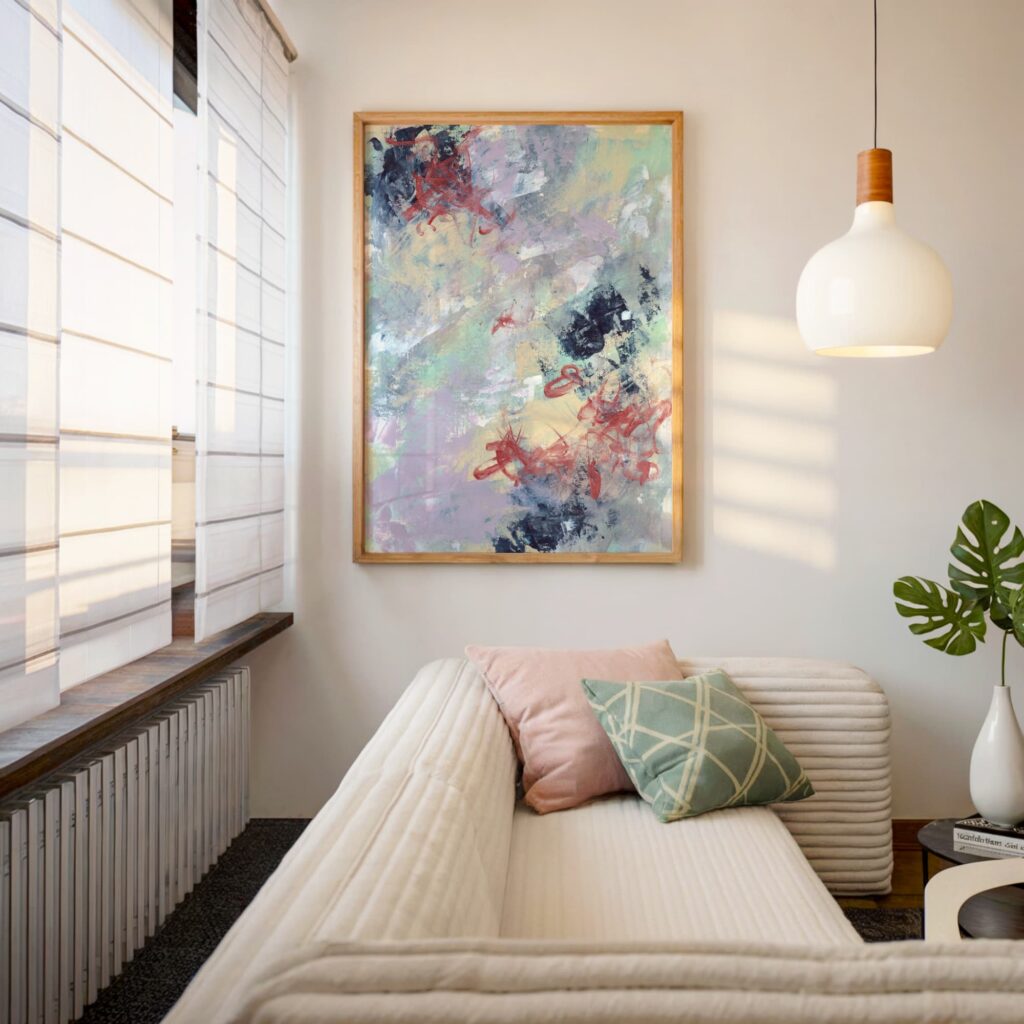
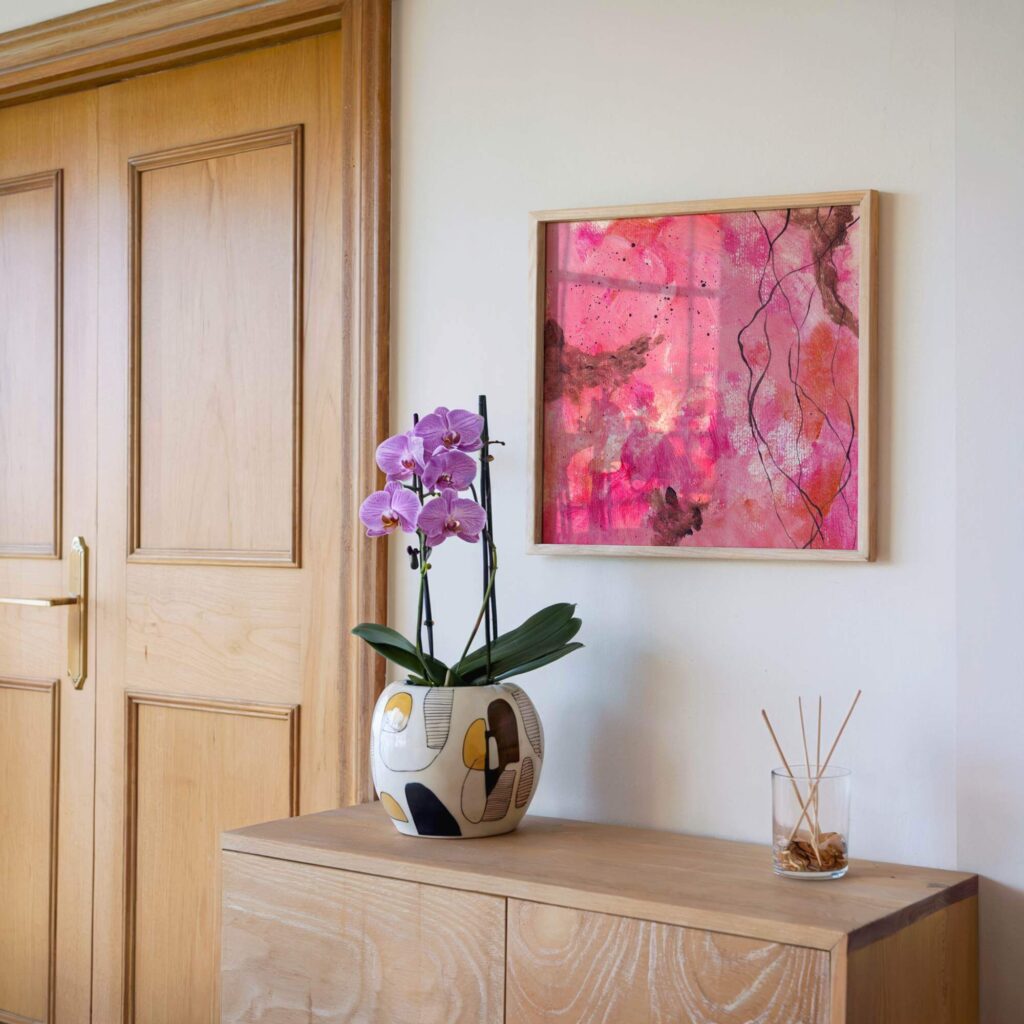
Why Art Has a Real Impact on Stress
The idea that art can reduce stress isn’t new. But it’s often misunderstood. It’s not about being an art lover or spending hours in a gallery. It’s about your brain and body responding to visual cues.
When you engage with art, especially abstract art, your body slows down. Your breath deepens. Cortisol drops. Brain activity shifts from survival-mode hypervigilance to creative, integrative processing. That’s not wishful thinking. That’s neuroscience.
Abstract art is uniquely suited to this because it doesn’t offer a clear image to decode. That absence of narrative gives your brain a rest. Instead of interpreting, you’re experiencing. And in that space, healing can begin.
The Nervous System Responds to What It Sees
Not all art is created equal when it comes to stress. Loud, cluttered environments, even beautiful ones, can create stimulation overload. But calm, well-chosen visual elements can create a felt sense of safety.
Here’s how:
Abstract art bypasses overthinking. Without literal content, it softens the mind’s constant analysis.
It speaks to the subconscious. Shape, colour, and rhythm communicate directly with the emotional brain.
It creates space for feeling. Art doesn’t fix stress. It gives you a place to feel it, process it, and move through it, safely.
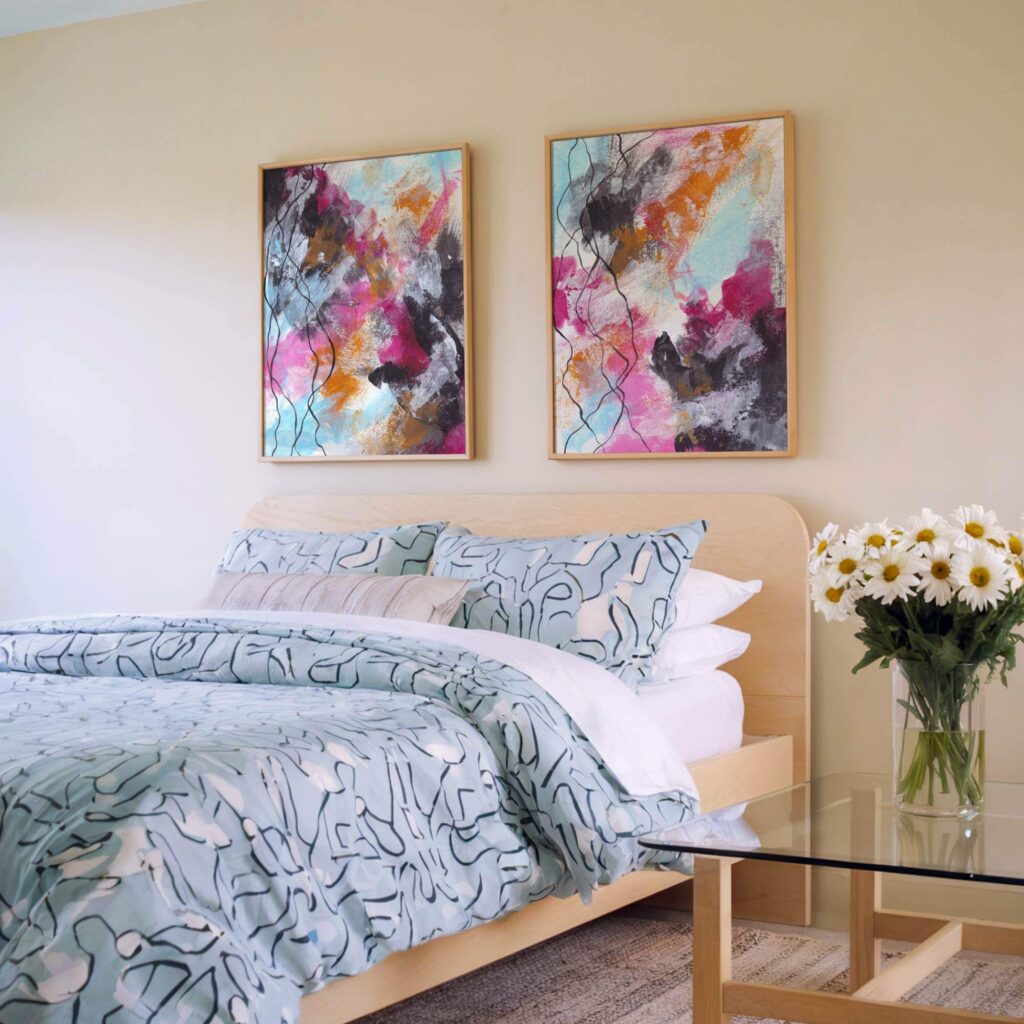
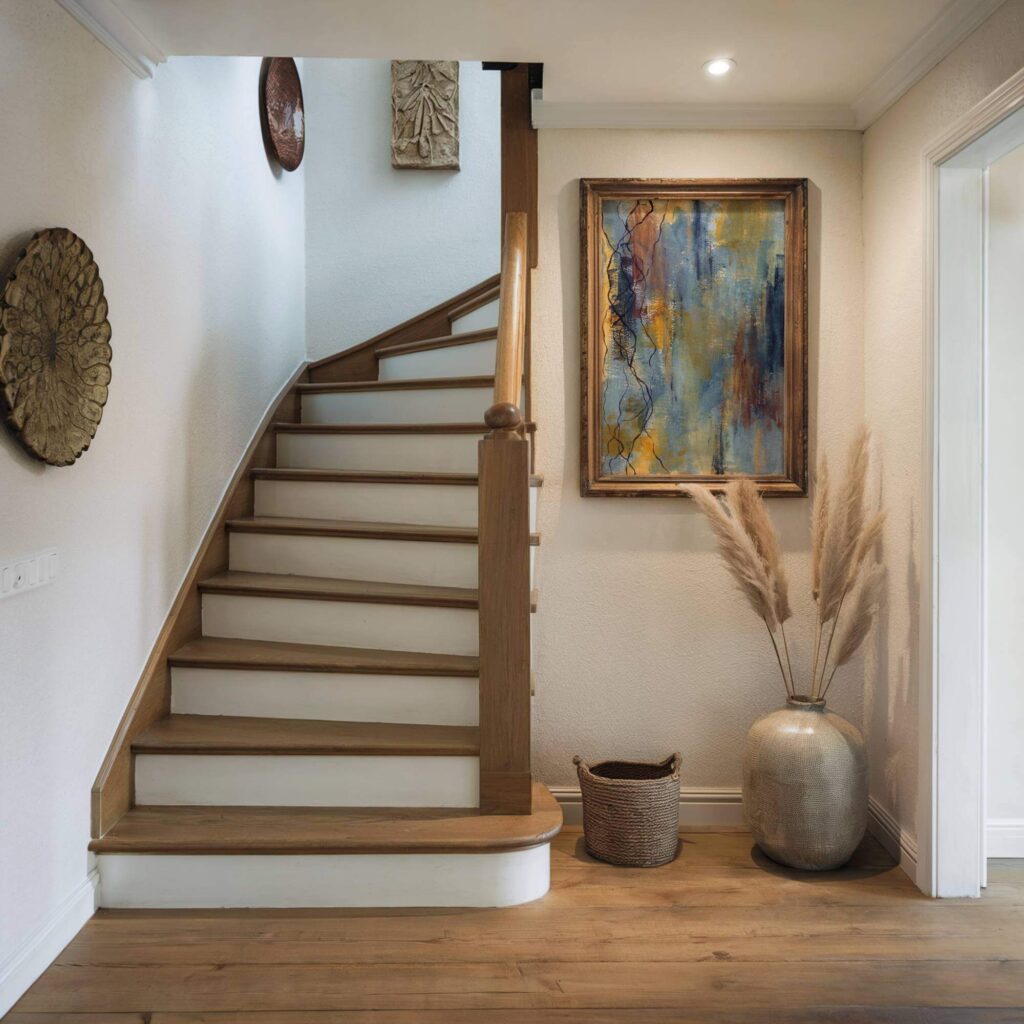
The Psychology of Colour in Stress-Free Design
Colour is the most powerful emotional signal in visual art. It speaks before shape, before subject. When used well, it shifts the atmosphere of a room, and the person in it.
Blue
Calms the mind, slows the heart rate, reduces anxiety. Ideal for bedrooms, reading corners, or anywhere you need peace.
Green
Restorative, grounding, and deeply connected to nature. Green offers emotional reset. Use it in spaces where balance and clarity are needed.
Purple
Introspective and emotional. Light purples like lavender help with emotional processing and mental quiet. Useful in therapy rooms or meditation spaces.
Soft Neutrals
Think stone, sand, clay, and bone. These colours create grounding and warmth without overstimulation. Great for transitional spaces or anywhere meant for stillness.
Earth Tones
Rich browns, warm rusts, olive greens, these tones support emotional stability and a sense of rootedness. Perfect for long-term workspaces or intimate rooms.
Use colour to regulate the tone of each room. A warm taupe canvas might calm the mood in a busy hallway. A misty blue piece could shift the energy of a chaotic bedroom. You don’t need to paint your walls. A single canvas can do the emotional heavy lifting.
Texture, Form, and the Feeling of a Room
Abstract art isn’t just about colour. It’s also about how a piece moves, or doesn’t. And that movement shapes how the room feels.
Smooth, flowing lines soothe. They suggest ease, safety, and natural rhythm.
Sharp edges and high contrast stimulate. They can be useful in small doses, like in workspaces, but overuse can elevate stress.
Layered textures draw the viewer in. They offer depth and subtle engagement, ideal for areas meant for reflection or emotional connection.
Curves, organic forms, and negative space allow the body to relax. If the artwork feels like it’s holding space, you will too.
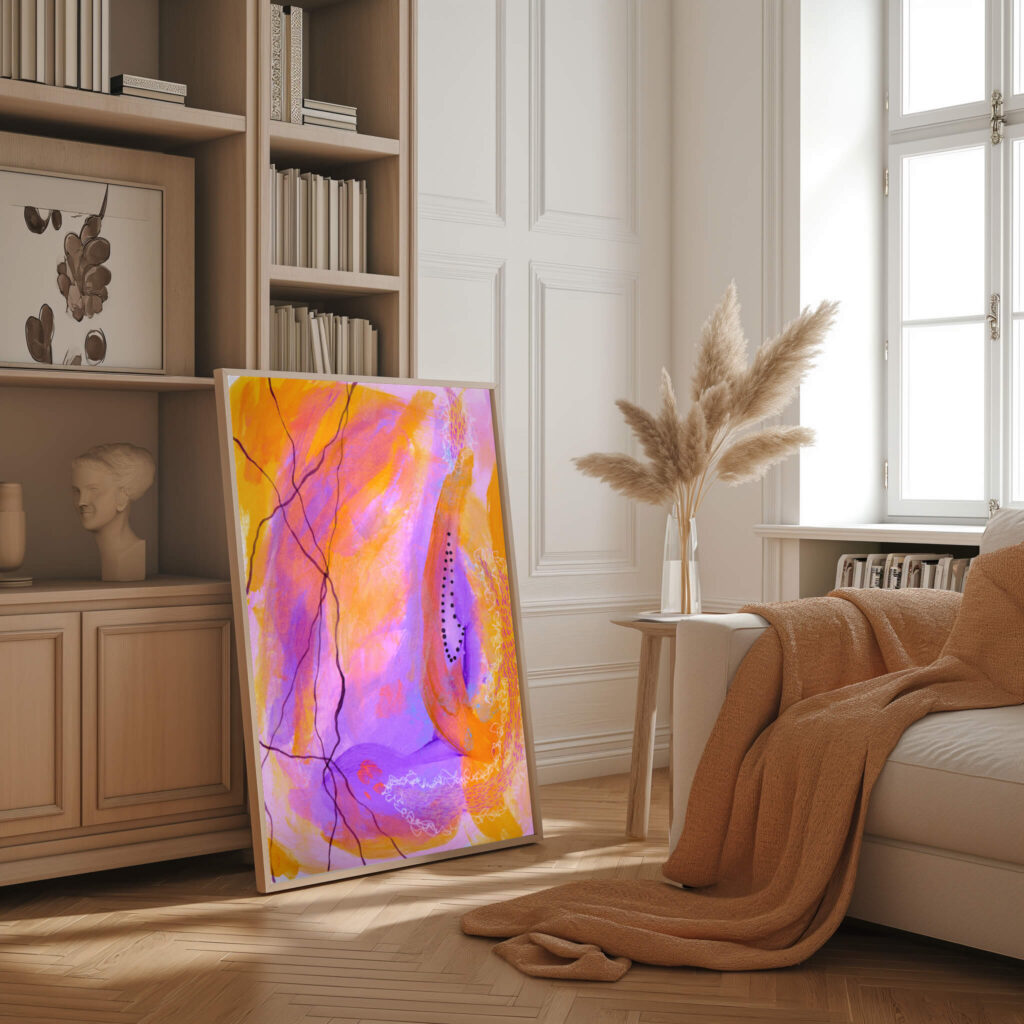
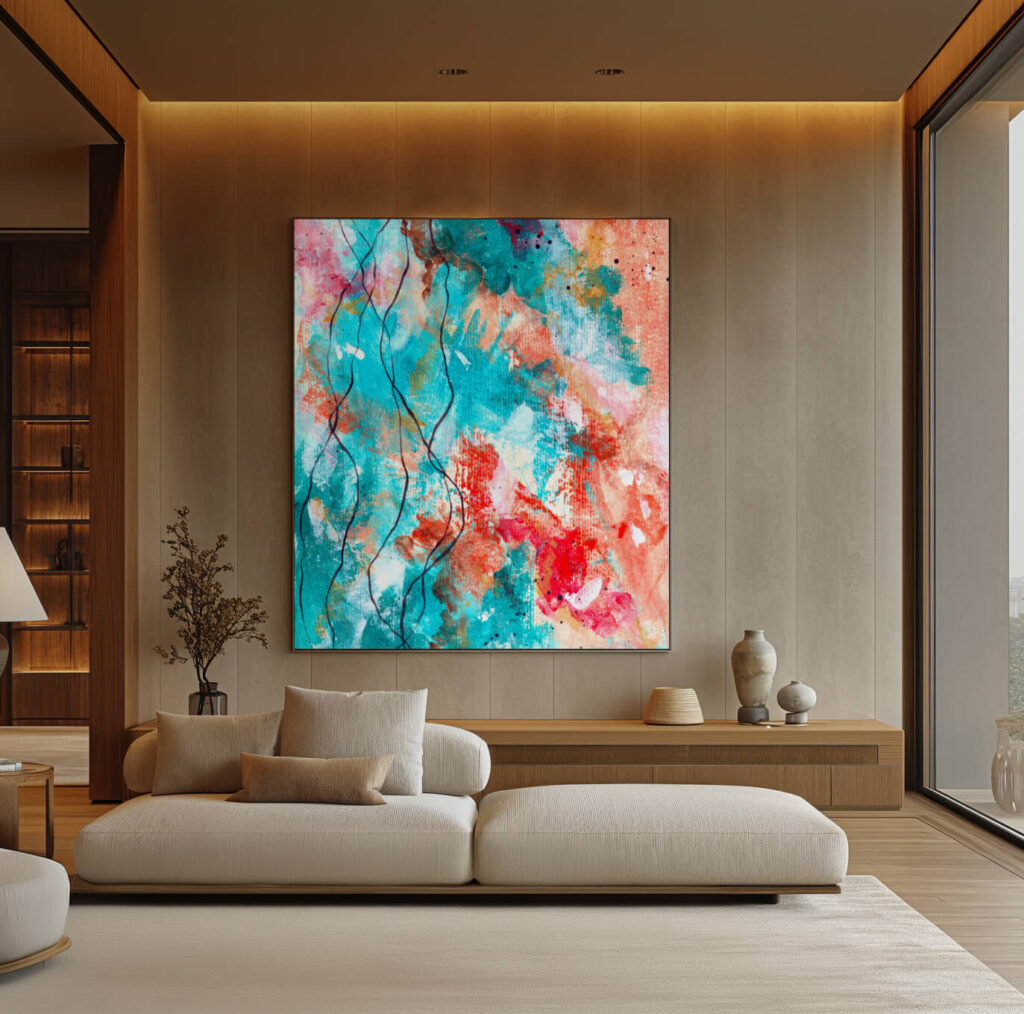
Where to Use Art for Wellness
Stress doesn’t live in just one room. And neither should the art that helps you manage it. Here’s how to use abstract art room by room to shift energy and reduce stress.
Living Room
This is often a transitional space, where work ends, social time begins, or solitude tries to sneak in. A large abstract piece in calming tones can anchor the room and act as a signal: you’re allowed to exhale here.
Bedroom
Choose pieces with minimal contrast and soft movement. Art here should act like a lullaby. Use cool blues, greys, or warm neutrals to create a sanctuary that holds you through the night.
Workspace
Here, you want balance. Too calm and you’ll drift. Too energetic and you’ll burn out. Choose abstract art that combines soothing base tones with subtle contrast or movement to maintain attention without pressure.
Bathroom or Spa Area
Use art here to support transition, from stress to stillness. Choose simple, nature-inspired forms with layered colour and soft finishes.
Meditation or Reading Corners
This is where presence matters. One carefully chosen piece can create a portal into inner space. Use grounding colours and negative space to enhance stillness.
Emotional Expression Without Language
Not all stress is conscious. Not all feelings have words. Abstract art gives us a mirror for what we carry internally, without needing to explain it.
You don’t need to understand why a piece moves you.
You don’t need to justify what you see in it.
You don’t need to decode it to benefit from it.
This is what makes abstract art so powerful in therapeutic environments. It invites softness without fragility. Strength without hardness. It creates emotional permission.
When placed with intention, abstract art becomes part of your daily regulation practice, a visual companion that helps you re-centre again and again.
My Offerings
Whether you’re a private collector, a wellness-focused brand, or a designer sourcing for a high-calibre project, I offer art that resonates deeply and subtly.
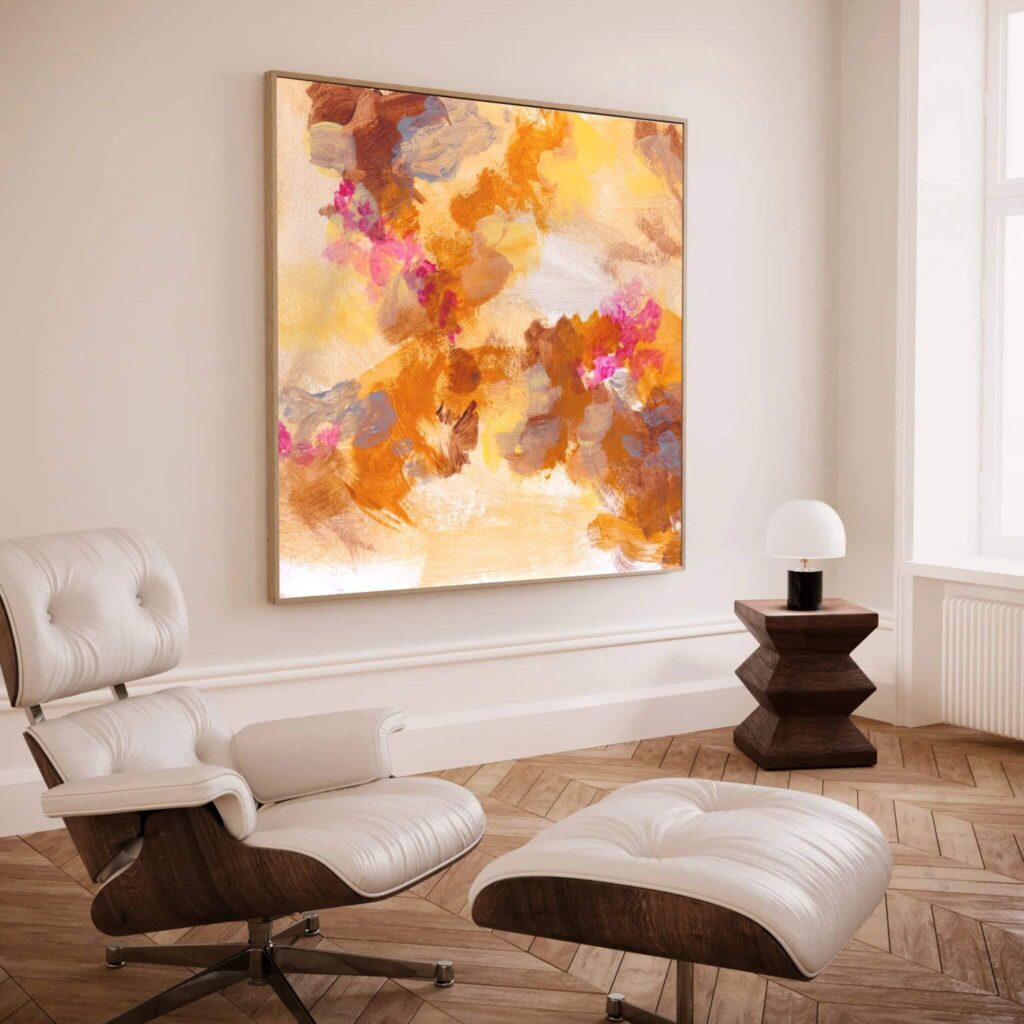
Collector's Vault
Curated canvas prints created from my original works—each one designed with emotional resonance and sustainable materials. Ideal for those creating meaningful spaces across the UK.
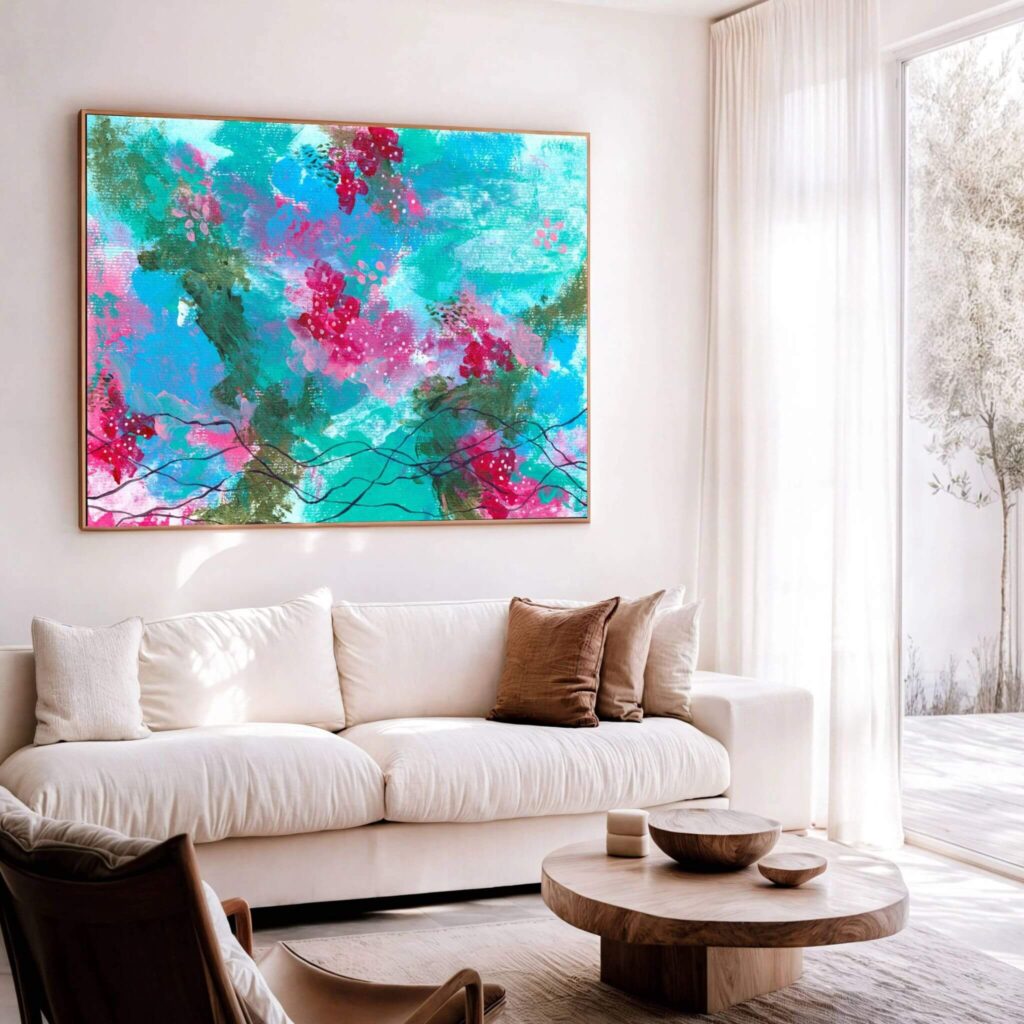
Soul on Canvas
Private commissions created from your story, your chapter, or your emotional intent. Made by hand. Printed once. Made to hold space for years to come.
The Last 10
Ultra-limited hand-embellished canvas works. Quietly released. Made to elevate, ground, or quietly command.
How to Curate Art That Supports Well-Being
You don’t need a designer. You need to listen to what your space, and your body, is asking for. Here’s how to begin:
Start with one room. Choose the space where you spend the most time or feel the most depleted.
Decide the feeling you want. Calm? Grounded? Energised but stable? Let that guide the palette and form.
Let art lead, not fill. You’re not decorating a gallery. You’re creating emotional architecture. One powerful piece is enough.
Test your own reaction. If a piece makes you breathe slower, stand taller, or feel more grounded, it belongs.
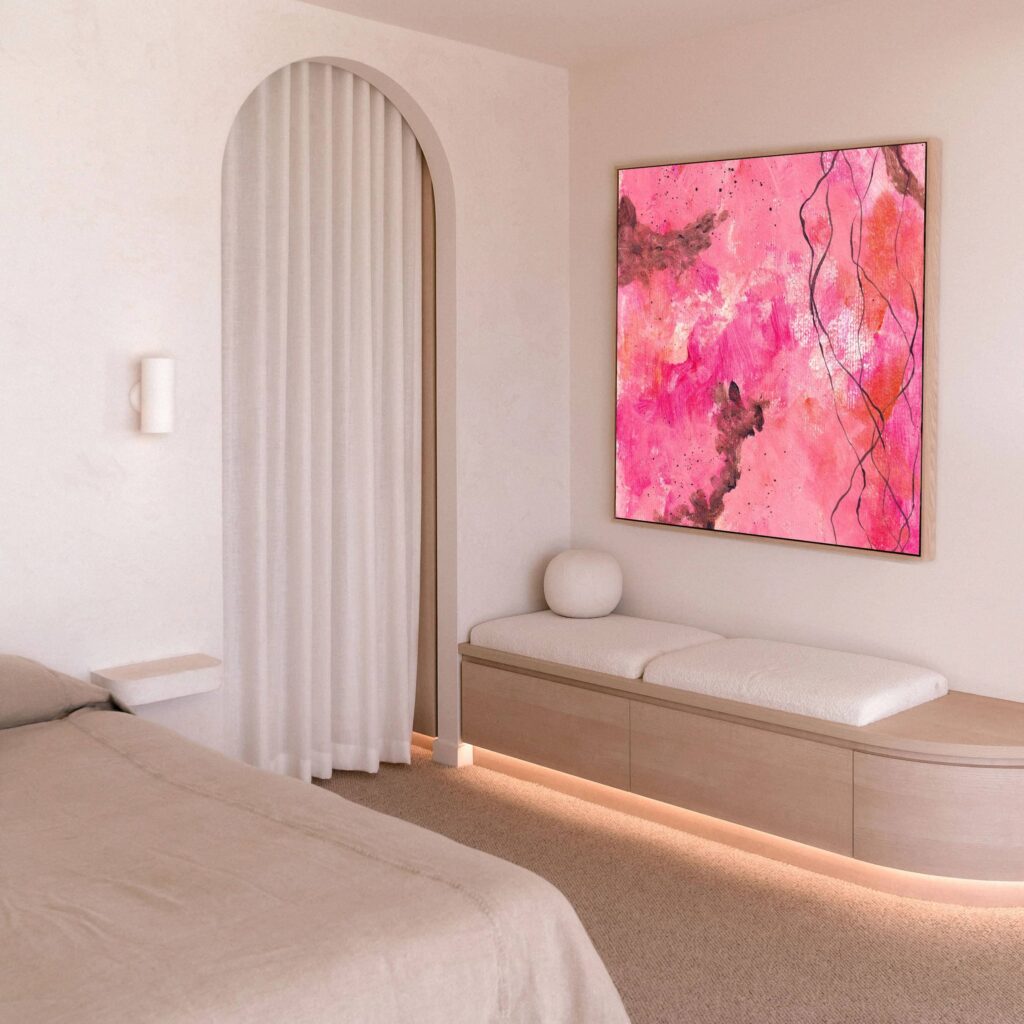
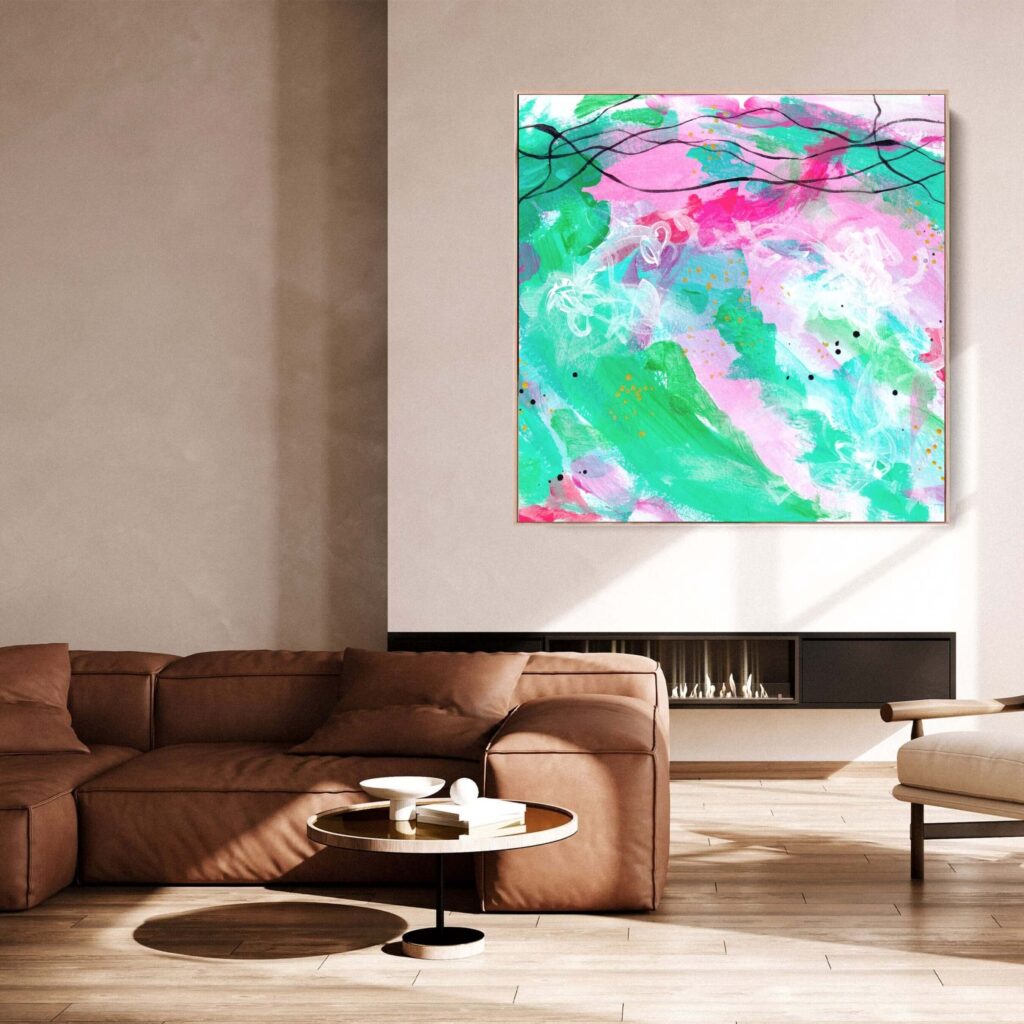
Conclusion: Art That Holds You
Wellness isn’t a checklist. It’s a way of relating to your environment. It’s building a room that protects your energy instead of draining it. It’s knowing that stillness doesn’t mean silence — it means being supported.
Abstract art helps create that support. It speaks to the part of you that needs rest but doesn’t know how to ask. It offers softness without weakness, beauty without noise, presence without pressure.
If you’re building spaces that heal, at home, at work, or somewhere in between, you’re welcome to explore the art created for that very purpose.
